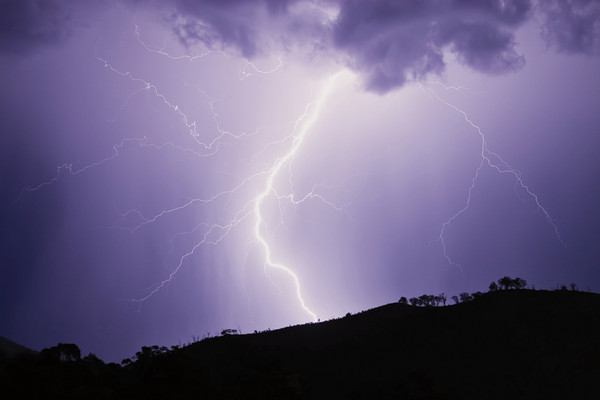
by Timothy Oleson Thursday, July 10, 2014

Credit: ©Fir0002/Flagstaffotos, CC BY-NC 3.0.
Solar wind consists of charged particles like electrons and protons emitted continuously by the sun. Especially high-speed solar winds — zipping through space at up to 800 kilometers per second — are produced at particular locations in the sun’s atmosphere, and, as the sun rotates, these fast-moving emissions “sweep past Earth quite regularly,” says Chris Scott, a space scientist at the University of Reading in England and lead author of the study.
From satellite data, Scott and his colleagues identified each time one of these high-speed gusts reached Earth between September 2000 and June 2005. The gusts’ arrivals, they reported in Environmental Research Letters, coincided with a slight drop in earthbound galactic cosmic rays, high-energy particles emitted by supernovas that constantly blow through the solar system.
Past research hasn’t provided a clear picture of how extraterrestrial particles affect lightning, Scott says, but some work has suggested that cosmic rays play a role in triggering it. So when the team compared the timing of the solar wind to lightning data collected by the U.K. Met Office over the same period, they “expected to find that when one of these streams went past, it would locally enhance the sun’s magnetic field around Earth, which would shield us from cosmic rays, and so we’d see fewer lightning strokes,” he says. Instead, “lightning rates went up.”
Scott and his colleagues observed an increase of roughly 30 percent in detected lightning strikes in the 40 days following the arrival of gusts of solar wind — with the peak occurring 12 to 18 days after — compared to the 40-day period prior.
By studying data collected both during the summer only — when lightning occurrence rates are relatively constant (as opposed to the spring and fall, when lightning rates increase and decrease, respectively) — as well as year-round, the researchers ruled out seasonal bias in the arrival times of the solar wind as an explanation for the amplifying effect. But, the team noted, atmospheric conditions must still be right for lightning to be triggered in the first place. There must be charge separation in the atmosphere, as develops in convective storms, Scott says. “The battery has to be charged up, so to speak, for it to be discharged.”
The mechanism by which the solar wind actually spurs lightning remains unclear. The particles in the solar wind have a range of energies, which determine if and how far they penetrate into the atmosphere. Some of them are probably energetic enough to reach cloud-bearing layers in the atmosphere, Scott says. And if they make it “to the heights of thunder clouds … they could be seeding the electrical pathways and triggering lightning,” he says. Measuring the flows and energies of these particles into different levels of the atmosphere using weather balloons or unmanned aircraft is the next step in understanding the process, he says.
Other details remain to be worked out as well, including whether the solar wind actually induces more lightning strikes, or if, instead, it strengthens strikes that would occur anyway (making them more prone to detection by monitoring instruments). Either way, the link to solar wind potentially offers the ability to “say something about lightning conditions many weeks in advance,” Scott says. Lightning causes thousands of fatalities worldwide each year, so “it’s a significant hazard, and any information we can add to help predict the severity of a storm is going to be useful.”
© 2008-2021. All rights reserved. Any copying, redistribution or retransmission of any of the contents of this service without the expressed written permission of the American Geosciences Institute is expressly prohibited. Click here for all copyright requests.